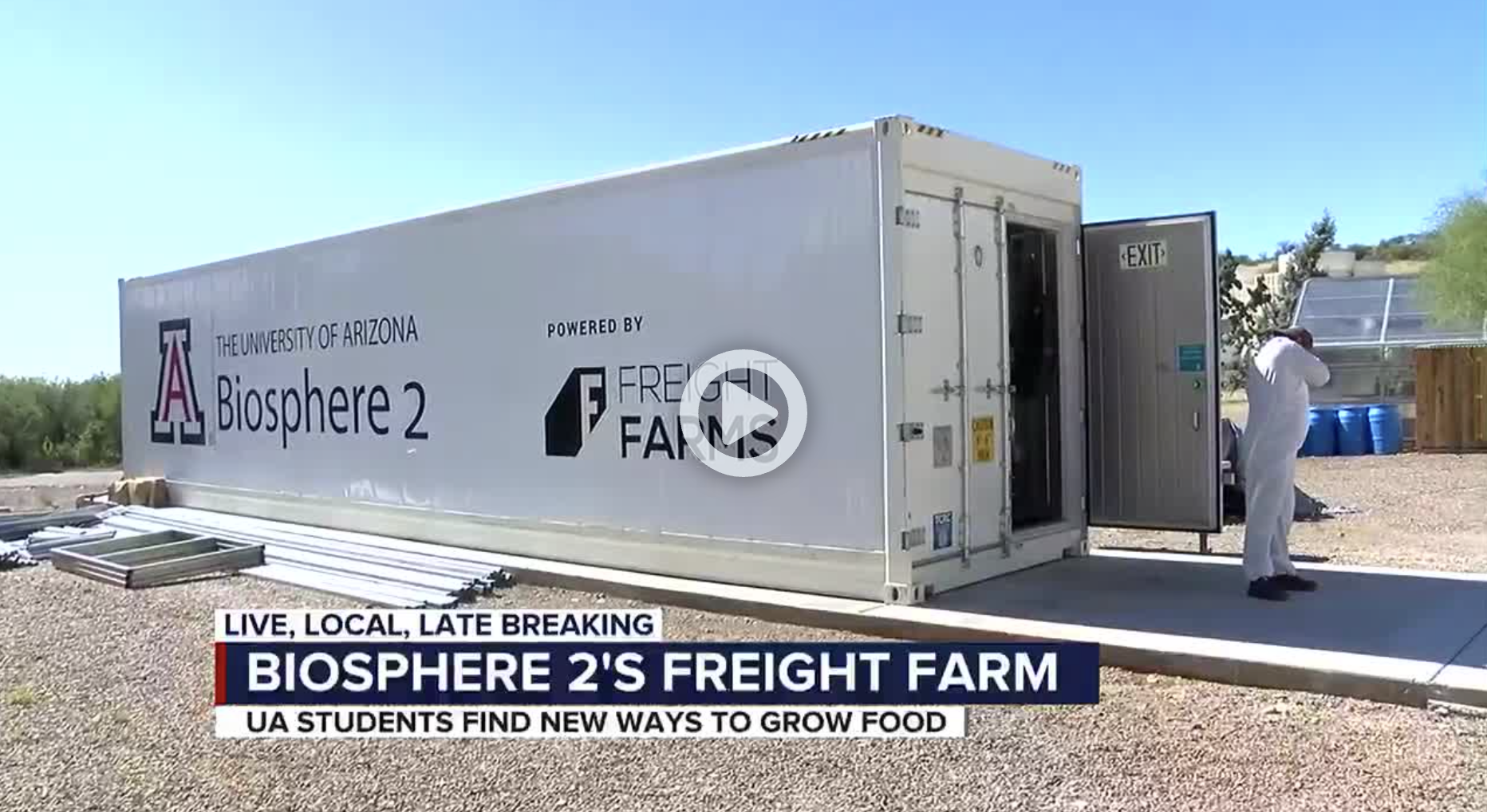VIDEO: From Shipping Container To Green Machine; UA’s Biosphere 2 Finds New Ways To Grow Food
Nov. 15, 2022
TUCSON, Ariz. (KOLD News 13) -One of the biggest challenges of climate change is figuring out how to produce enough food. Students and scientists at University of Arizona’s Bisophere 2 in Oracle, Arizona are working on a solution: a container farm that can grow as much produce as more than an acre of land.
“Kale, basil, arugula, bok choy...you name it, we’ve probably got it going,” said Jordan Collins, a UA graduate student and Biosphere 2 technician.
Right now, with just one “Freight Farm,” the B2 teams is growing 800 heads of lettuce a week. It does everything hydroponically, and gives these lush, green walls of produce all the light, temperature control, and nutrients they need.
”We’re using less water, less electricity, than a traditional farm - which is huge. We’re using less resources, getting bigger yields out of it,” Collins said.
That’s vital for adapting our food supply to climate change. We’ll have to use less water and space - to feed more people.
“Grocery stores maybe wanting to put something like this in their parking lot,” Collins said. “They’re directly reducing carbon emissions and putting produce back into the grocery store right away faster turnaround.”
That’s why a student group voted to fund this high tech grow project with a grant. They see it as an investment in the future: theirs, and all of ours.
“We’ve always been able to overcome many obstacles and this climate change is just one step and will become one thing more that we can say we overcame to our future generations,” Collins said.
But this food supply is also helping people today.
”It’s wholesome to be able to grow food, feed people, the basic things. that build life,” said Paiton Stith, a UA junior studying plants sciences.
The bushels of fresh, quality produce go to help feed their fellow students, through the UA food pantry. They also supply the nearby Impact of Southern Arizona food bank with food for families in crisis.
”There’s something really nice about working for the university, to help the university grow food to feed the students. There’s a nice kind of cyclical element to that,” Stith said.
“Seeing the people this actually helps is really rewarding has really been a rewarding experience,” Collins said.
But there’s yet another goal: learning how to grow plants and survive in space!
”This is where plants provide all our needs and what does that look like, because if we’re gonna spend any time in space, I know I’d rather have a leafy green salad than say a freeze dried salad,” said John Adams, Deputy Director of Biosphere 2.
Future missions to Mars, the moon, or beyond could use this vertical farming tech, too. It works where water is scarce. Water shortage is a problem that looms large not just for future space travel, but on Earth, in our state, right now. For Collins, finding solutions to dwindling water gives him hope.
”It’s really empowering when you’re talking about less water, especially in a place like Arizona, when water is such a big issue for us,” Collins said. “This is huge.”
In the project’s next step, engineering students are combining solar cells with the freight farm to create a fully self-sufficient growing operation.



